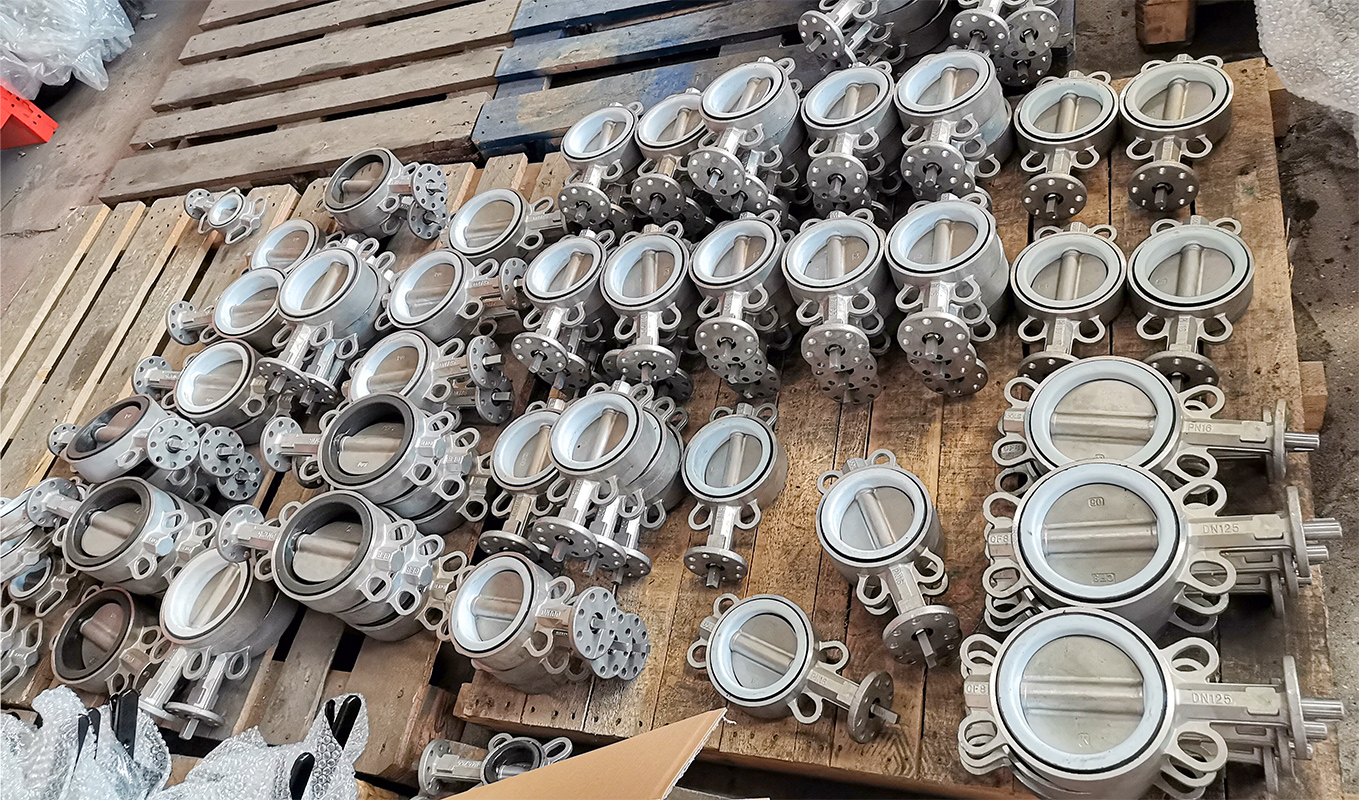The butterfly valve is a valve that uses a disc-type opening and closing member to reciprocate about 90° to open, close or adjust the flow of the medium. The butterfly valve is not only simple in structure, small in size, light in weight, low in material consumption, small in installation size, small in driving torque, easy and fast to operate, but also has good flow regulation and closing and sealing characteristics at the same time. It has been developed in the past ten years. One of the fastest valve varieties. The use of butterfly valves is very extensive. The variety and quantity of its use continues to expand, and is developing towards high temperature, high pressure, large diameter, high sealing performance, long life, excellent adjustment characteristics, and one valve with multiple functions. Its reliability and other performance indicators have reached a high level.
With the application of chemically resistant synthetic rubber to butterfly valves, the performance of butterfly valves can be improved. Because synthetic rubber has the characteristics of corrosion resistance, erosion resistance, dimensional stability, good resilience, easy forming, low cost, etc., synthetic rubber with different properties can be selected according to different usage requirements to meet the operating conditions of the butterfly valve.
Because polytetrafluoroethylene (PTFE) has strong corrosion resistance, stable performance, not easy to age, low friction coefficient, easy to form, and stable in size, it can be filled and added with appropriate materials to improve its comprehensive performance, resulting in better strength and friction. The butterfly valve sealing material with lower coefficient overcomes the limitations of synthetic rubber. Therefore, polymer materials represented by polytetrafluoroethylene and their filling and modified materials have been widely used in butterfly valves, thus improving the performance of butterfly valves. It has been further improved, and a butterfly valve with a wider temperature and pressure range, reliable sealing performance and longer service life has been manufactured.
In order to meet the requirements of industrial applications such as high and low temperature, strong erosion, long life, etc., metal sealing butterfly valves have been greatly developed. With the application of high temperature resistance, low temperature resistance, strong corrosion resistance, strong erosion resistance, and high strength alloy materials in butterfly valves, metal sealed butterfly valves have been widely used in high and low temperature, strong erosion, long life and other industrial fields. Butterfly valves with large diameter (9~750mm), high pressure (42.0MPa), and wide temperature range (-196~606℃) appeared, which brought the technology of butterfly valves to a whole new level.
When the butterfly valve is fully opened, it has a small flow resistance. When the opening is between about 15° and 70°, it can perform sensitive flow control. Therefore, the application of butterfly valves is very common in the field of large-diameter adjustment.
Since the movement of the butterfly plate of the butterfly valve is wiping, most butterfly valves can be used for media with suspended solid particles. Depending on the strength of the seal, it can also be used for powder and granular media.
Butterfly valves are suitable for flow regulation. Since the pressure loss of the butterfly valve in the pipe is relatively large, about three times that of the gate valve, when selecting the butterfly valve, the influence of the pressure loss of the pipeline system should be fully considered, and the strength of the butterfly plate withstand the pressure of the pipeline medium when it is closed should also be considered. In addition, it is necessary to consider the limitation of the working temperature of the elastic valve seat material at high temperature.
The structure length and overall height of the butterfly valve are small, the opening and closing speed is fast, and it has good fluid control characteristics. The structural principle of the butterfly valve is most suitable for making large diameter valves. When a butterfly valve is required to control flow, the most important thing is to correctly select the specification and type of the butterfly valve so that it can work properly and effectively.
Generally, in throttling, regulating control and mud media, short structure length, fast opening and closing speed, and low pressure cut-off (small pressure difference) are required. Butterfly valves are recommended. In two-position adjustment, reduced diameter channels, low noise, cavitation and vaporization, a small amount of leakage to the atmosphere, and abrasive media, butterfly valves can be used. Throttle adjustment under special working conditions, or under strict sealing, severe wear, and low temperature (cryogenic) conditions.
